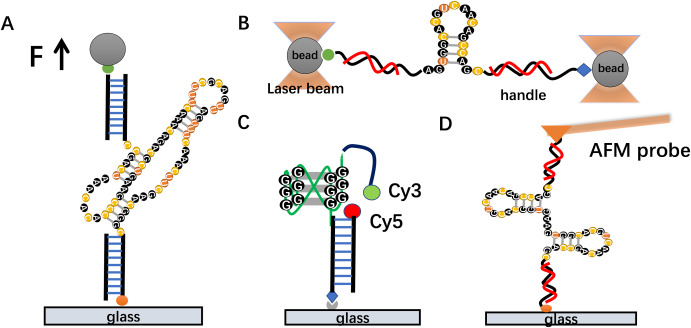
### FragGen: An Innovative Machine Learning Tool Transforming Drug Development
In a pivotal advancement that could speed up drug discovery, scientists have created an advanced machine learning tool named **FragGen**, designed to yield more practical and realistic drug candidates. Utilizing a fragment-based methodology and precisely managing molecular geometries, FragGen navigates many obstacles linked with traditional computational drug design. The platform does not just innovate molecular structures; it also aids in their experimental validation—demonstrated by the creation and evaluation of a new anticancer medication.
#### The Drug Design Dilemma
Most pharmaceuticals operate by attaching to specific pockets within proteins in the body, effectively modifying their activities to combat diseases. The aim of drug design is to formulate molecules that bind tightly and specifically to these protein sites. Stronger binding typically correlates with enhanced drug effectiveness. Machine learning (ML) has surfaced as a robust solution to this challenge, offering insights into patterns within protein and molecular structures to better predict drug candidates.
Nonetheless, significant obstacles remain. Although the total chemical space of potential molecules is immense, the datasets accessible for training machine learning models to traverse this space are rather limited. This poses a notable challenge: models may yield unrealistic structures or propose molecules that, while effective, are tough to synthesize or not suitable as drugs. For instance, models might prefer compounds featuring numerous fused aromatic rings—a common trait of strong binders—even though they may not be practical for synthesis or possess poor drug-like characteristics.
#### Constructing Molecules Piece by Piece: FragGen’s Fragment-Based Approach
This is where FragGen distinguishes itself. Unlike other machine learning systems that aim to conceptualize entire drug molecules at once, FragGen incrementally assembles molecules utilizing chemical fragments—smaller, pre-validated building blocks poised for potential drugs.
As **Odin Zhang**, a researcher involved with FragGen at Zhejiang University in China, states, ‘constructing molecules from building blocks ensures the molecular generation pathway is synthesizable.’ By assembling molecules gradually in this intentional way, FragGen guarantees they can be feasibly developed in a laboratory, addressing a crucial limitation of current methodologies.
However, constructing molecules in stages presents its own set of challenges. Any mistakes in fragment placement may accumulate, resulting in distorted or chemically unfeasible molecular configurations. To mitigate this, FragGen employs a sophisticated multitiered machine learning framework, with distinct models specializing in various segments of the molecular design process.
#### Multimodal Machine Learning for Molecular Structure
FragGen’s strength resides in its systematic method of molecular assembly. Initiating from an empty protein pocket, the tool utilizes a series of machine learning models to make sequential choices:
1. **Target Atom Selection**: A model chooses which atom in the developing molecule should serve as the next attachment point for a fragment.
2. **Fragment Prediction**: Another model identifies which chemical fragment ought to be supplemented to the existing molecule.
3. **Bonding Configuration**: A third model assesses how the new fragment should connect to the target atom.
4. **Geometry Refinement**: Additional models compute geometric variables such as bond angles and dihedral angles to ensure that the growing molecule achieves a realistic and energetically favorable configuration.
By allocating specialized models to each of these tasks, FragGen alleviates the limitations of “one-size-fits-all” algorithms. This modular architecture receives accolades from industry experts, including **Ré Mansbach**, a computational biophysicist at Concordia University in Canada, who commends the intricacy of this approach. ‘Decomposing the problem into a series of steps that simpler models can address is an excellent way to develop scientific tools that employ deep learning thoughtfully,’ remarks Mansbach.
#### Experimental Validation: Bridging Theory and Practice
The real measure of a drug design tool is its effectiveness in real-world scenarios, and FragGen has exhibited remarkable capabilities already. When challenged to design a type-II kinase inhibitor—a class of molecules targeting specific enzymes associated with cancer—FragGen generated a list of **97 candidates in merely 10 minutes**. From this pool, the three most promising compounds were synthesized and assessed. Remarkably, all three demonstrated effectiveness at micromolar and nanomolar concentrations, indicative of substantial potency against the target.
The successful outcomes of these compounds in experimental assessments highlight the practical significance of FragGen’s design approach. Its drug recommendations score high on theoretical metrics of efficacy and synthesis feasibility, translating into tangible results in laboratory settings.
#### Constraints and the Contribution of AI to Drug Development
Despite its achievements, FragGen, akin to all computational tools, possesses its limitations. A primary challenge is specificity: a drug must bind effectively to its intended protein target without impacting unrelated proteins, which could result in adverse side effects. FragGen has not yet fully resolved this issue, but it offers an invaluable foundation for researchers. As **Ré Mansbach** observes, ‘in instances where you wish to implement artificial intelligence and deep learning…